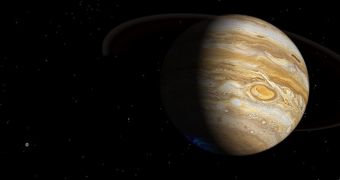A paper published in the journal Nature this past July 17 documents the use of lasers to squeeze a bunch of poor, defenseless diamonds to up to 50 million times Earth's atmospheric pressure. Needless to say, none of the diamonds survived the experience.
This series of experiments was carried out at the Lawrence Livermore National Laboratory in California, US, which currently accommodates for the world's largest laser, the National Ignition Facility.
The researchers who got to toy with the National Ignition Facility and the really unlucky diamonds that will never again get to be any girl's best friends conducted these experiments hoping to gain a better understanding of giant planets.
Their use of laser beams to compress the diamonds up to the point when the stones experienced the equivalent of 50 million Earth atmospheres pushing down on them was a simulation of conditions that exist deep inside planets like Jupiter and Saturn.
As detailed in the journal Nature, the scientists had to resort to as many as 176 laser beams to generate a pressure wave strong enough to replicate the effect that 50 million Earth atmospheres would have on the material properties of diamonds.
“The experimental techniques developed here provide a new capability to experimentally reproduce pressure-temperature conditions deep in planetary interiors,” study lead author Ray Smith commented on the importance of this investigation.
According to Ray Smith and fellow researchers, the diamonds that were exposed to the equivalent of 50 million times Earth's atmospheric pressure were all pulverized in less than 10 billionths of a second. Still, the scientists say that their death was not in vain.
On the contrary, they claim that data obtained while carrying out this series of experiments will help them figure out how matter that sits at the core of giant planets like Jupiter and Saturn behaves. In turn, this will lead to new theories concerning the formation and evolution of such celestial bodies.
“This new ability to explore matter at atomic scale pressures, where extrapolations of earlier shock and static data become unreliable, provides new constraints for dense matter theories and planet evolution models,” said physicist Rip Collins.
These experiments carried out at the Lawrence Livermore National Laboratory were not the first during which massive pressures were recreated in laboratory conditions. However, previous investigations all used shock waves that also birthed high temperatures, which made the data fairly unreliable.
As explained by Ray Smith and colleagues, the data obtained while carrying out experiments involving shock waves that also generated temperatures of hundreds of thousands of degrees was not to be trusted due to the fact that the interiors of planets like Jupiter and Saturn are not heated to such an extent.

 14 DAY TRIAL //
14 DAY TRIAL //